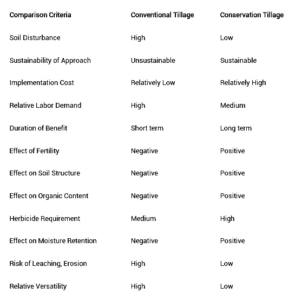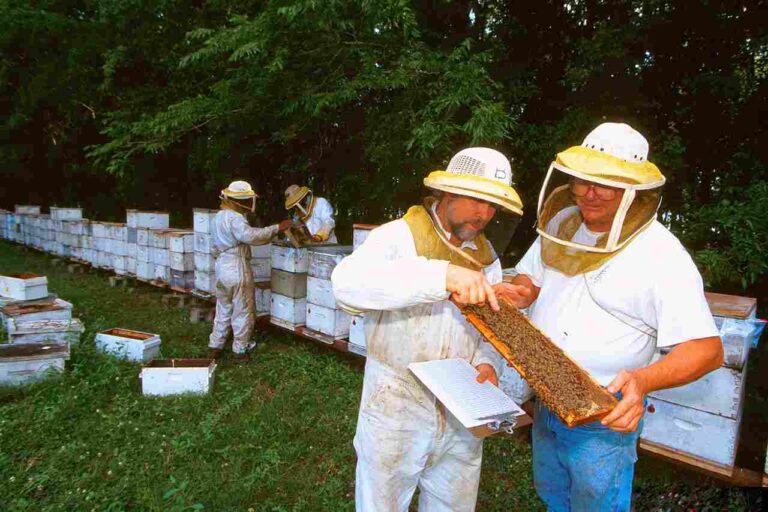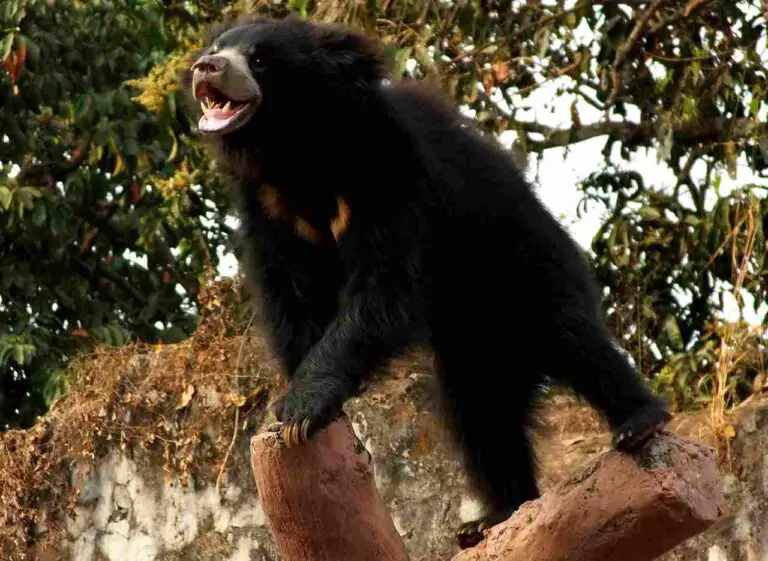Contour Farming Meaning, Synonyms, Benefits, Erosion Control
Contour farming is a sustainable system of agriculture whereby cultivation is done along areas of equal topographic elevation (contour lines). This article discussed contour farming meaning, synonyms, comparisons, benefits, and erosion control.
-Contour Farming Meaning: 8 Ways to Define Contour Farming
-Contour Farming Synonyms and their Comparison
-How Contour Farming Prevents Soil Erosion
Contour Farming Meaning: 8 Ways to Define Contour Farming
Also known as contour cultivation, contour cropping, terrace farming, and strip farming; contour farming is the cultivation of crops and performance of agricultural activities along lines of contour or areas of equal elevation [3].
The contour farming meaning can be outlined based on agricultural activities involved, as follows;
Contour farming is a mode of farming whereby ploughing, sowing, cultivation, harvesting, and general soil management are all carried out uniformly along areas of equal elevation.
The contour farming meaning based on geographic requirements or conditions is given below;
Contour farming is an agricultural method practiced in areas with irregular undulating topography and suitable drainage; soil and climatic conditions to allow for cultivation of crops across the slope, along lines of equal elevation.
Another contour farming meaning based on the purpose of this practice is given below;
Contour farming is the cultivation of crops across slopes in order to control erosion, increase soil fertility and infiltration, and improve agricultural productivity.
The role of labor in contour cultivation can also be used to define the concept as follows;
Contour farming is a type of farming that requires significant labor to ensure that elevation is put into consideration when carrying out all agricultural activities in an undulating terrain.
The contour farming meaning can be given based on its potential to prevent or mitigate natural hazards;
Contour farming is the cultivation of slopes across areas of equal elevation, to reduce the risk of landslides among other hazards.
The concept can be defined based on its links to other sustainable farming practices;
Contour farming is a sustainable practice whereby rows of vegetation are planted at nearly equal level across a slope, and which may be combined with crop rotation, cover cropping or organic faming to increase its effectiveness.
Lastly, contour farming advantages and disadvantages can be used to define the concept, as follows;
Contour farming is an agricultural practice whose advantages and disadvantages are; erosion control, cost reduction, improved fertility, biodiversity, biomass accumulation, improved water quality, hazard mitigation (advantages); labor, low adoption, feasibility, suitability, low production potential, weed control challenges, lack of equipment, knowledge and awareness (disadvantages).
Contour Farming Synonyms and their Comparison
Contour farming synonyms are; contour ploughing, contour cropping, contour terracing, contour plowing, contour bunding, contour cultivation, strip cropping, keyline design, step farming, strip terracing or contour terracing.
While these terms are often used in place of contour farming, they represent unique concepts that differ from C.F.
The difference between contour farming and step farming is that step farming incorporates a series of steps that are cut across the slope to protect the soil from erosion, while contour farming is farming across the slope without necessary inclusion of steps.
Contour farming is different from strip cropping because strip cropping is the cultivation of alternate vegetative strips of different crop types on land while contour farming is more concerned with planting along the contours and may not involve alternate rows of different crop types.
The following table summarizes the characteristics of each synonym and their differences from contour farming;

Contour Farming Benefits
Benefits of contour farming are; crop protection and productivity, soil conservation and protection, water conservation, and hazard mitigation.
1). Crop Protection and Productivity
Contour farming can protect crops on hilly, undulating or sloping agricultural lands.
One of the ways by which it achieves this is by preventing soil erosion. Erosion control protects crops from physical removal by water or wind.
Alternatively, C.F can reduce crop pests, especially when it is combined with crop diversification [5], rotation, and other practices of sustainable agriculture.
By protecting both crops and soil, C.F improves overall crop yield and productivity in hilly agricultural lands [7].

2). Soil Conservation and Protection
Soil conservation and protection are the two primary objectives of contour farming.
There are multiple ways in which C.F conserves and protects soil. One of these is by controlling erosion.
Farming along contour lines and across slopes, creates barriers to the downward flow of water [8]. These barriers may be ridges, terraces, or strips and rows of vegetation.
By blocking the path of downward flow, the barriers created across a sloping agricultural land may reduce the velocity and power of water that flows downward. This makes the water less-capable of weathering and transporting soil (erosion), uprooting vegetation, or causing other forms of damage.
At the same time, C.F captures precipitation water and allows this water to be absorbed by the soil, thereby increasing moisture content, organic matter (biomass) and carbon concentration, and fertility [2]. These effects make soil more healthy and productive, protects the ecosystem, and mitigates overall environmental degradation within the vicinity of the farm.
3). Water Conservation
The two main ways in which contour farming conserves water are by reducing runoff and increasing infiltration rate.
As a result of barriers (strips of vegetation, terraces) created across slopes in C.F., the amount of water which is lost as runoff and flood in hilly regions, is reduced. This water is prevented from flowing freely downhill and causing erosion.
When the flow velocity of runoff is reduced, its infiltration rate increases. More water can now be absorbed by the soil for crop growth and soil improvement. Such an effect prevents regional water resources from being wasted by putting them to useful application.
Practices like mulching can be combined with contour farming to further conserve water resources and enhance soil moisture retention [6]. Also, C.F makes irrigation more effective, sustainable and conservative.

4). Hazard Mitigation
Contour farming mitigates both manmade and natural hazards.
In terms of manmade hazards, C.F reduces the risk of pollution due to leaching and runoff of chemical fertilizers from agricultural lands in hilly regions. Pollution by sediments is also reduced by contour farming.
Landslide is an example of a natural hazard whose risk of occurrence is mitigated by contour farming. The practice of C.F helps to reduce slope instability and hence the risk of mass movement [4].
How Contour Farming Prevents Soil Erosion
Contour farming prevents soil erosion by reducing the velocity and power of fluids flowing down a slope under the influence of gravity.
This process can be broken down into steps of velocity reduction, power dissipation and absorption.
1). Velocity Reduction
Velocity reduction occurs as fluid collide with strips of vegetation, bunds, and terraces in a contour farm.
The effect of these collisions causes the fluid, which could be water or wind, to lose its speed or velocity as it flows further down the slope.
2). Power Dissipation
Power dissipation is the loss of areal impact or pressure of the fluid as it flows downslope.
In contour farms, the power of flowing fluid dissipates as it collides with barriers in its path. These barriers cause the gravitational force of the fluid to spread across a broad surface area, thereby reducing the resultant impact.
The above explanation can be better understood by using the physical concept of pressure, which is as follows;
Pressure= Force/Area —-(1)
When the area of application of force increases, the resultant pressure exerted by the force decreases, because pressure is inversely proportional to area [1]. This is what occurs as water or wind flows down a contour farm or terraced slope.
Fluid pressure is one of the factors (alongside fluid volume) that determine the power of the fluid, or its capacity to erode a surface or body. A decrease in pressure implies that the ability of the fluid to cause erosion may decrease.
3). Absorption
Two types of absorption occur in contour farms and terraced slopes. These are fluid pressure absorption and fluid volume absorption.
Fluid pressure absorption occurs when the fluid loses its pressure or power as it collides with barriers along its path downslope. These barriers become able to ‘absorb’ the diminished pressure of the fluids by withstanding it.
Fluid volume absorption occurs when the fluid are absorbed by the slope. This may be in form of infiltration, percolation, or aeration.
Infiltration and percolation are concerned with water, which is absorbed by the soil as it flows downslope. The rate at which this absorption occurs is increased in contour farms by the flow barriers which increase the retention time of water on the slope.
In some descriptions of this phenomenon, it is said that the barriers act as small water dams that prevent free flow and form small reservoirs of water on the slope. These small ‘reservoirs’ of water are able to infiltrate the soil and be absorbed.
Streams of air or wind are also absorbed by the soil in contour farms and terraced slopes as they lose their velocity and power along the downslope path. This is called aeration, and is a good way to support the growth of useful soil organisms, as well as optimize soil microbial activities like biodegradation.
Conclusion
Contour farming is the agricultural practice of cultivating land and growing crops across slopes and along areas of equal elevation. Its synonyms include; contour cropping, strip cropping, strip farming, contour cultivation, step farming, terracing, and contour bunding.
Benefits of contour cropping include;
- Crop Protection and Productivity
- Soil Conservation and Protection
- Water Conservation
- Hazard Mitigation
Contour farming prevents soil erosion through;
- Velocity Reduction
- Power Dissipation
- Absorption
References
1). Ambaum, M. H. P. (2008). “General relationships between pressure, weight, and mass of a hydrostatic fluid.” Proceedings of The Royal Society A Mathematical Physical and Engineering Sciences 464(2092). Available at: https://doi.org/10.1098/rspa.2007.0148. (Accessed 26 July 2022).
2). Angima, S.; O’Neill, M. K.; Stott, D. E. (2001). “On-farm Assessment of Contour Hedges for Soil and Water Conservation in Central Kenya.” Available at: https://www.researchgate.net/publication/228742124_On-farm_Assessment_of_Contour_Hedges_for_Soil_and_Water_Conservation_in_Central_Kenya. (Accessed 26 July 2022).
3). Gathagu, J. N.; Mourad, K. A.; Sang, J. (2018). “Effectiveness of Contour Farming and Filter Strips on Ecosystem Services.” Water 10(10). Available at: https://doi.org/10.3390/w10101312. (Accessed 26 July 2022).
4). Guerra, A. J. T.; Fullen, M.; Oliveira, M. O.; Bezerra, J. F. R.; Shokr, M. (2017). “Slope Processes, Mass Movement and Soil Erosion: A Review.” Pedosphere 27(1):27-41. Available at: https://doi.org/10.1016/S1002-0160(17)60294-7. (Accessed 26 July 2022).
5). Noor, M. M.; Sivapragasan, A. (2005). “Chapter 7. Cropping Systems For Pest Management.” Organic Vegetable Cultivation In Malaysia (pp.131-146). Available at: https://www.researchgate.net/publication/314829203_Chapter_7_Cropping_Systems_For_Pest_Management. (Accessed 26 July 2022).
6). Prem, M.; Ranjan, P.; Seth, N.; Patle, G. T. (2020). “Mulching Techniques to Conserve the Soil Water and Advance the Crop Production – A Review.” Current World Environment Special Issue(1). Available at: https://doi.org/10.12944/CWE.15.Special-Issue1.02. (Accessed 26 July 2022).
7). Ramanjaneyulu, A. V.; Nagula, S.; Sravanthi, D.; Ramana, M. V. (2020). “Contour Farming Improves Soil Moisture and Dry Land Crop Productivity on Rainfed Alfisols.” International Research Journal of Pure and Applied Chemistry 21(21):60-69. Available at: https://doi.org/10.9734/IRJPAC/2020/v21i2130290. (Accessed 26 July 2022).
8). Stevens, C. J.; Quinton, J. N.; Bailey, A. Deasy, C.; Silgram, M.; Jackson, D. R. (2009). “The effects of minimal tillage, contour cultivation and in-field vegetative barriers on soil erosion and phosphorus loss.” Soil and Tillage Research 106(1):145-151. Available at: https://doi.org/10.1016/j.still.2009.04.009. (Accessed 26 July 2022).




